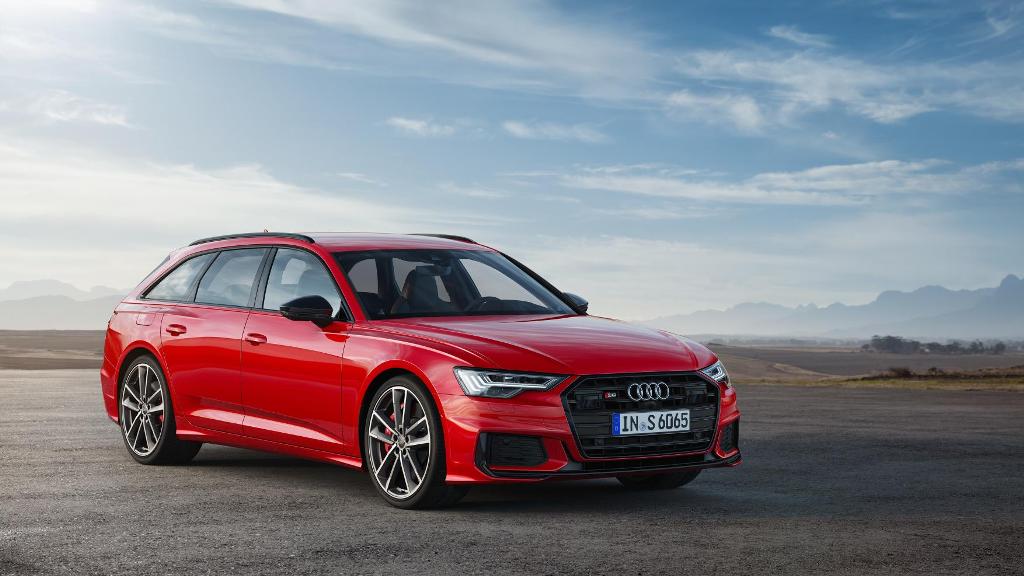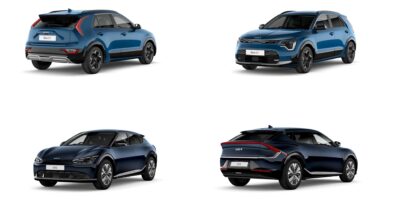For the first time the executive class Audi S Series models are welcoming TDI power into their ranks – the new Audi S6 and S7 join the recently reinstated SQ5 in offering a torque-rich V6 TDI engine that fully delivers on the promise of the red rhombus-backed S badge but is also in it for the long haul. Thanks to an electrically powered compressor working with a 48-volt primary electrical system, the new MHEV models combine characteristic TDI economy with exceptional throttle response which can be fully exploited with the help of S sport suspension with damping control, dynamic all-wheel steering and the option of ceramic disc-assisted braking.
“Torque kick†– electrically powered compressor and 700 Nm of torque
An impressive 700 newton metres (516.3 lb-ft) of torque available across an engine speed range of 2,500 to 3,100 rpm is the ideal basis for compelling performance in the new executive class S TDI models. They take the very successful configuration of the SQ7 TDI to the next level by pairing an electrically powered compressor with a 48-volt primary electrical system for the first time. This takes the 3.0-litre V6 TDI’s total power output to 350 horsepower, which is transmitted via the eight-speed tiptronic automatic transmission to the quattro all-wheel-drive system.
Ever ready: the electrically powered compressor
The electrically powered compressor (EPC) delivers high starting performance. As well as very vigorous acceleration, the electric supercharger provides a repeatable boost function when accelerating. This means the EPC pre-empts any hint of turbo lag, and enables high responsiveness and powerful acceleration in every driving situation.
The EPC’s response time is under 250 milliseconds, its peak output is seven kilowatts and its maximum speed is 70,000 rpm. The electric turbocharger’s boost function extends all the way to an engine speed of 1,650 rpm. Thanks to dual supercharging, in other words the EPC working in tandem with the exhaust turbocharger, the full-size S models achieve a constant torque of 700 newton-metres (516.3 lb-ft) across an engine speed range of 2,500 to 3,100 rpm. The EPC supports the TDI’s turbocharger whenever there is insufficient energy in the exhaust gas for a spontaneous torque build-up – when starting off or accelerating at low load, from a low engine speed.
The EPC, which visually resembles a conventional turbocharger, is mounted directly on the engine in the intake air path behind the intercooler. In most operating statuses it is circumvented by a bypass. However if the load demanded by the accelerator is high and the energy available on the turbine side is low, the bypass valve closes, guiding the intake air to the EPC. The compressed air flows directly into the combustion chamber.
The result: spontaneous response and impressive pulling power when accelerating, overtaking and for changes of load. That places the entire power of the 3.0 TDI engine immediately at the driver’s disposal whenever they require it. In everyday driving, the technology avoids frequent downshifts, keeps the engine speed level low and suppresses the turbo lag to which a conventional exhaust turbocharger is susceptible.
The EPC paves the way for an impressive starting performance. The V6-TDI complete with EPC propels the new S6 Saloon from 0-62mph in 5.0 seconds, with the S6 Avant and S7Â Sportback taking a tenth of a second longer over the standard sprint. The top speed is electronically limited to 155mph.
“Clean power†– coasting for up to 40 seconds: the 48-volt mild-hybrid system
While the EPC boosts the performance, the mild-hybrid system (MHEV) helps to improve fuel efficiency. The 48-volt MHEV system comprises a belt alternator starter (BAS) and a lithium-ion battery with a capacity of 10Â Ah housed in the vehicle floor beneath the luggage compartment. The BAS is connected to the crankshaft. During deceleration it can recover up to 8 kW of power, which it then stores in the lithium-ion battery. When the driver accelerates again, the BAS reacts instantly by restarting the engine.
MHEV technology allows for start/stop operation from a speed as low as 13mph. Thanks in part to the integration of the mild-hybrid system and the vehicle sensors, the S models realize a fuel saving of up to 0.4 litres in real driving conditions and can coast for up to 40 seconds with the combustion engine deactivated.
On that basis, the S TDI models combine impressive driving dynamics with high efficiency, low fuel consumption and low emissions. All S TDI models have homologation to the Euro 6d temp emission standard. WLTP fuel economy values for the S6 TDI Saloon range from 35.8 mpg to 36.2 mpg, equating to NEDC-correlated CO2Â emissions of 164 g/km. The figures for the S6 Avant are 34.9 mpg to 35.3 mpg and 171 g/km, and for the S7 Sportback 35.3 mpg to 35.8 mpg and 170Â g/km.
Concentrated high tech: the engine
The 3.0 TDI is notable for its power delivery and high efficiency. Its displacement of 2,967 cm3 develops 350 metric horsepower. Its specific output is 117.9 hp per litre of engine capacity, and its specific torque is 235.9 Nm (174.0 lb-ft) per litre.
The V6 TDI weighs only around 190 kilograms and has concentrated high tech to offer in every department. Its common rail system injects fuel at a pressure of up to 2,500 bar. Crankshaft, pistons, connecting rods and oil management meet high-performance requirements, and sophisticated measures have been taken to reduce friction in the crankshaft and camshaft drive. The cooling circuits of the crankcase and cylinder heads are kept separate so that the engine oil warms up rapidly from a cold start – the heads have dual-section water jackets. The coolant flow is directed to the oil cooler, the EPC, the BAS and the compressor case of the turbocharger as needed.
The exhaust turbocharger, with a turbine wheel measuring 50 millimetres in diameter, generates a relative boost pressure of up to 2.4 bar. Its variable turbine geometry (VTG) is optimized for low-loss flow. The external low-pressure exhaust gas recirculation (EGR) only draws off the exhaust gas after the particulate filter so that the full mass flow can power the supercharger, significantly increasing its effectiveness. Operation of 3.0 TDI is ultra-refined.








